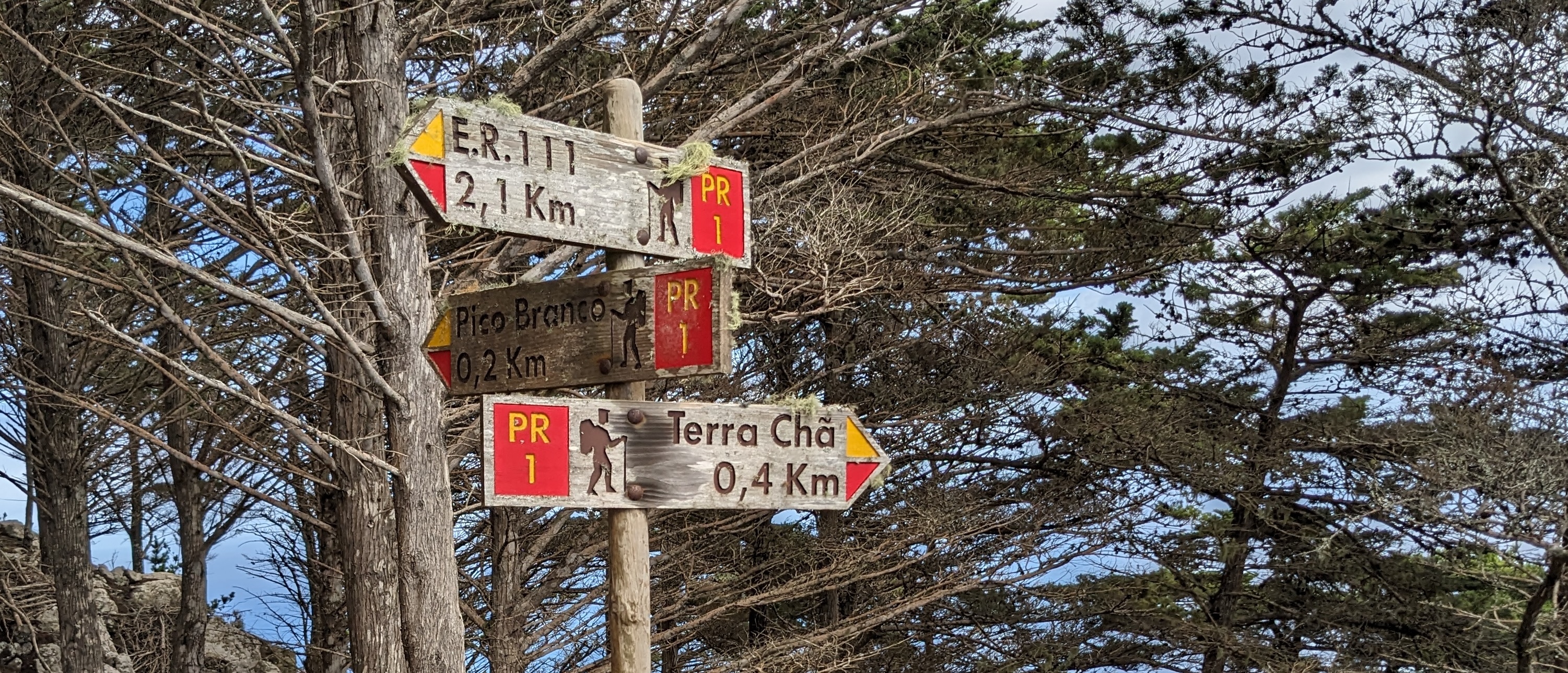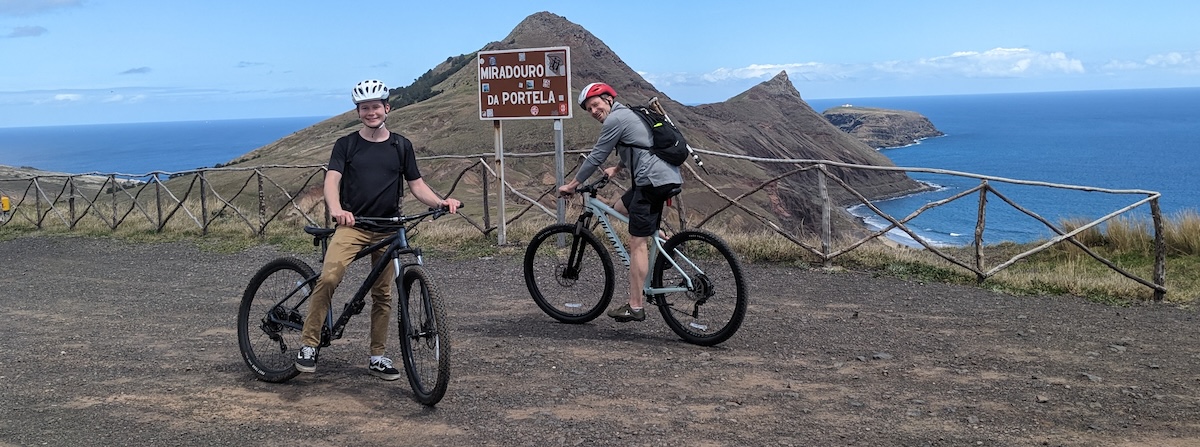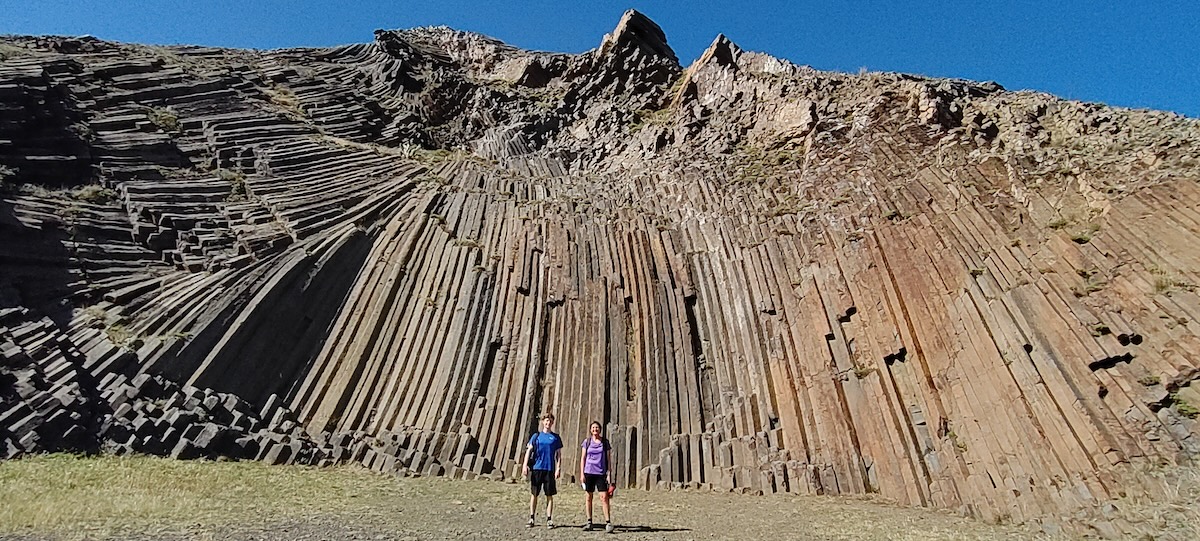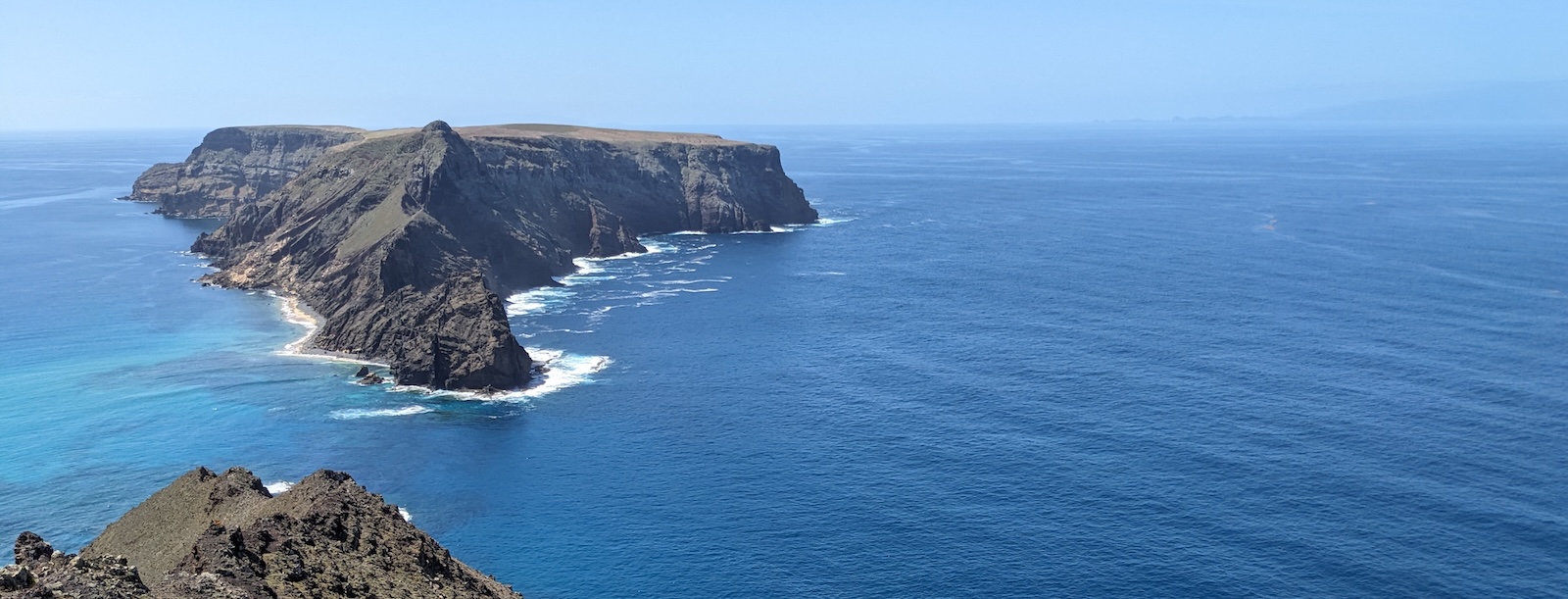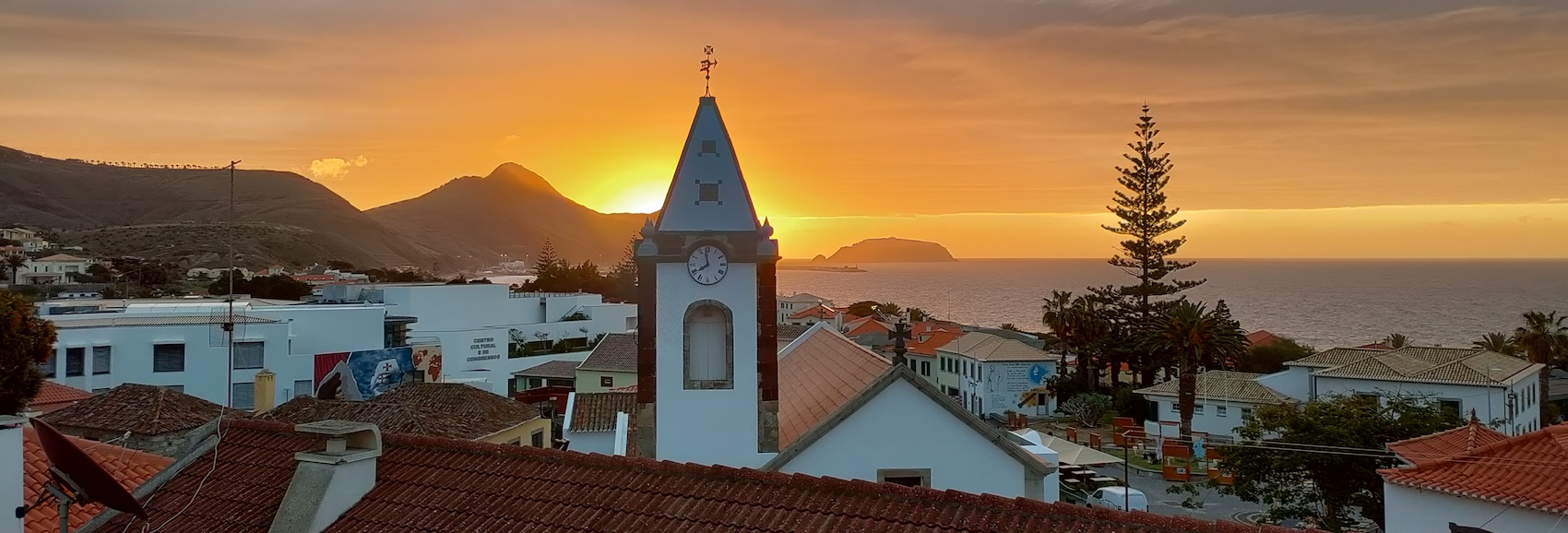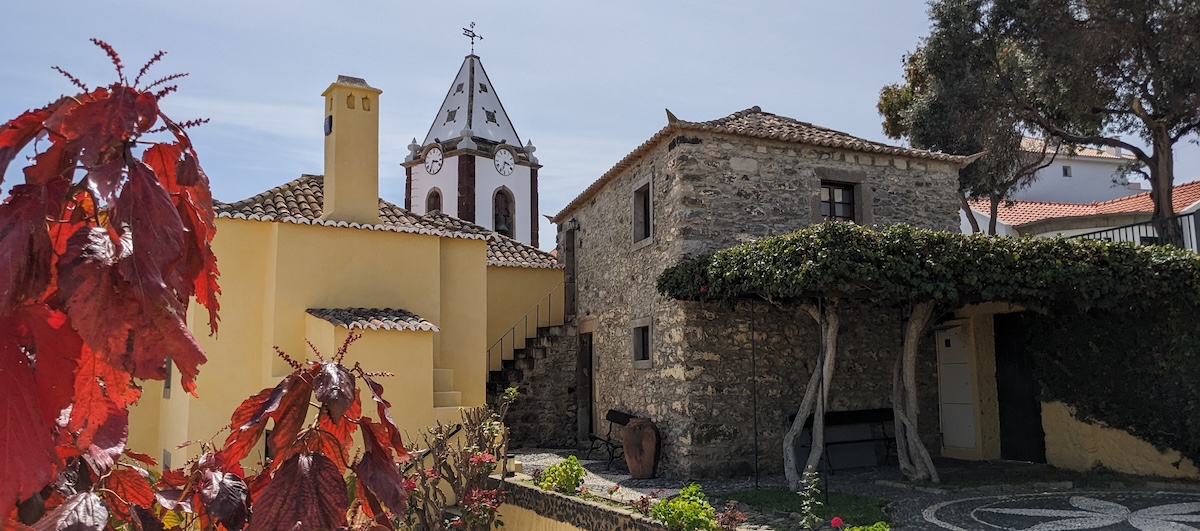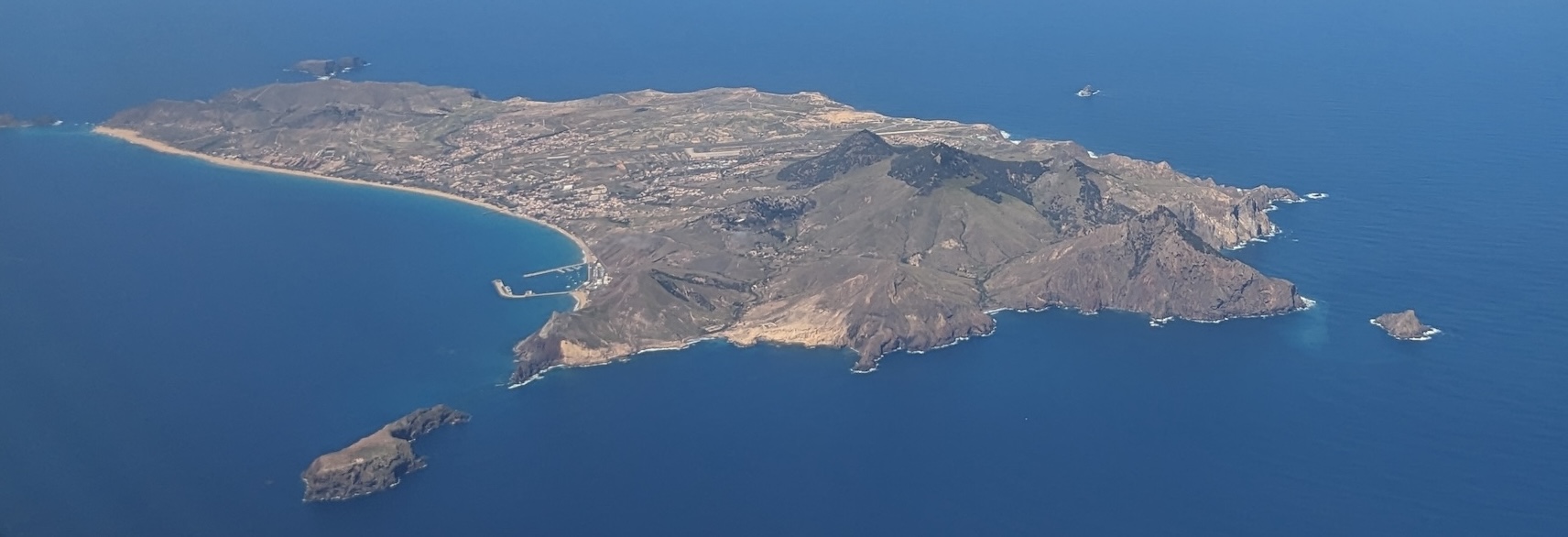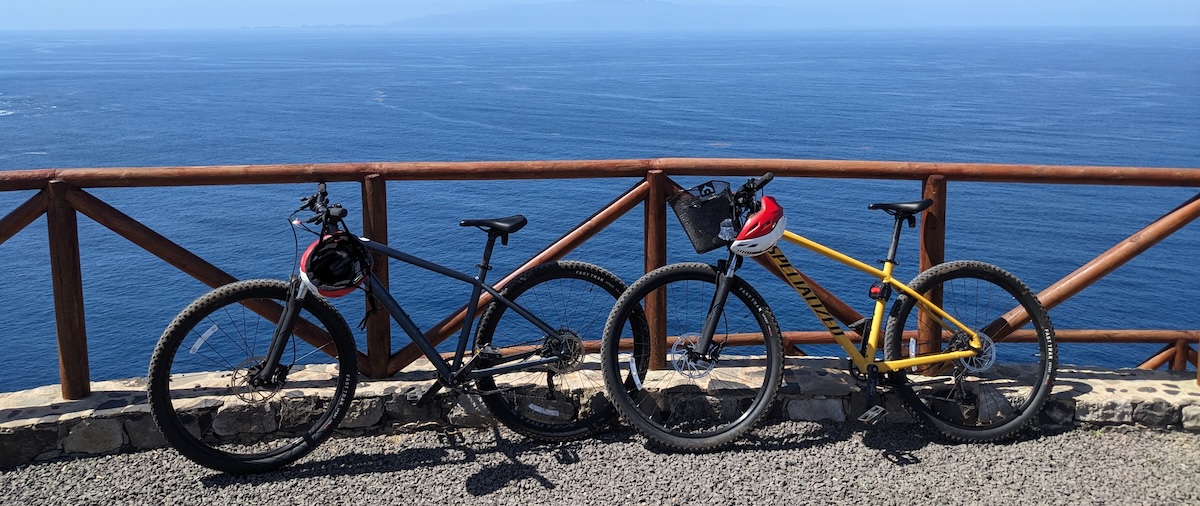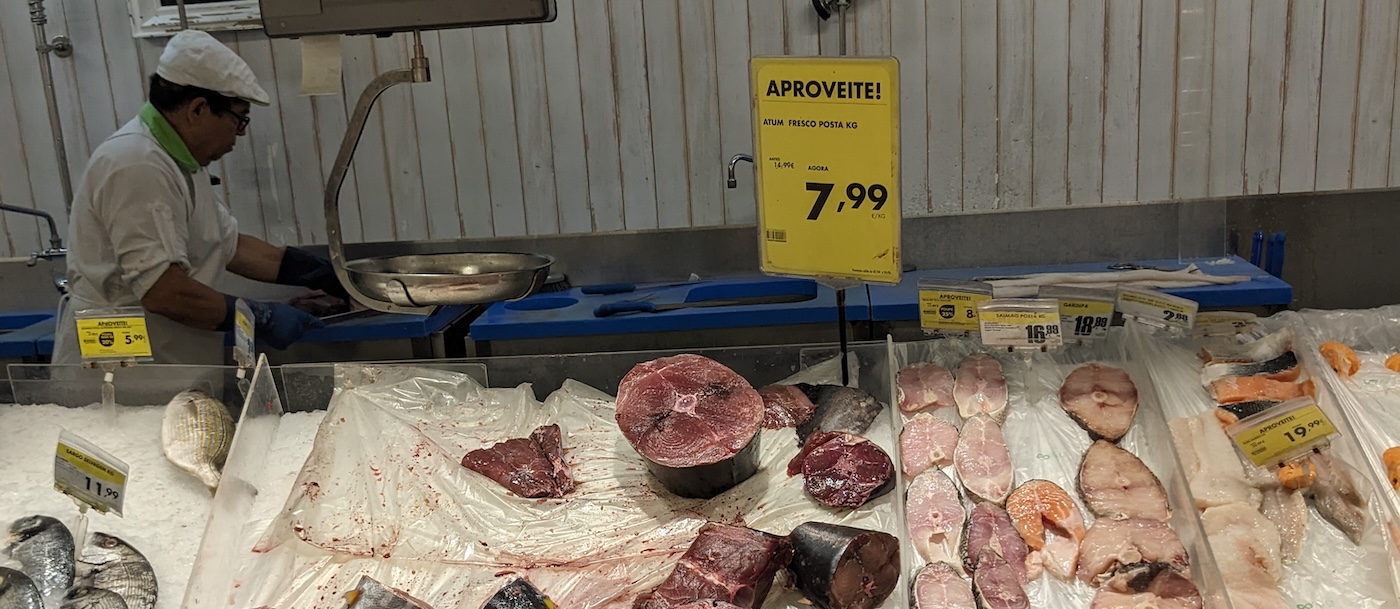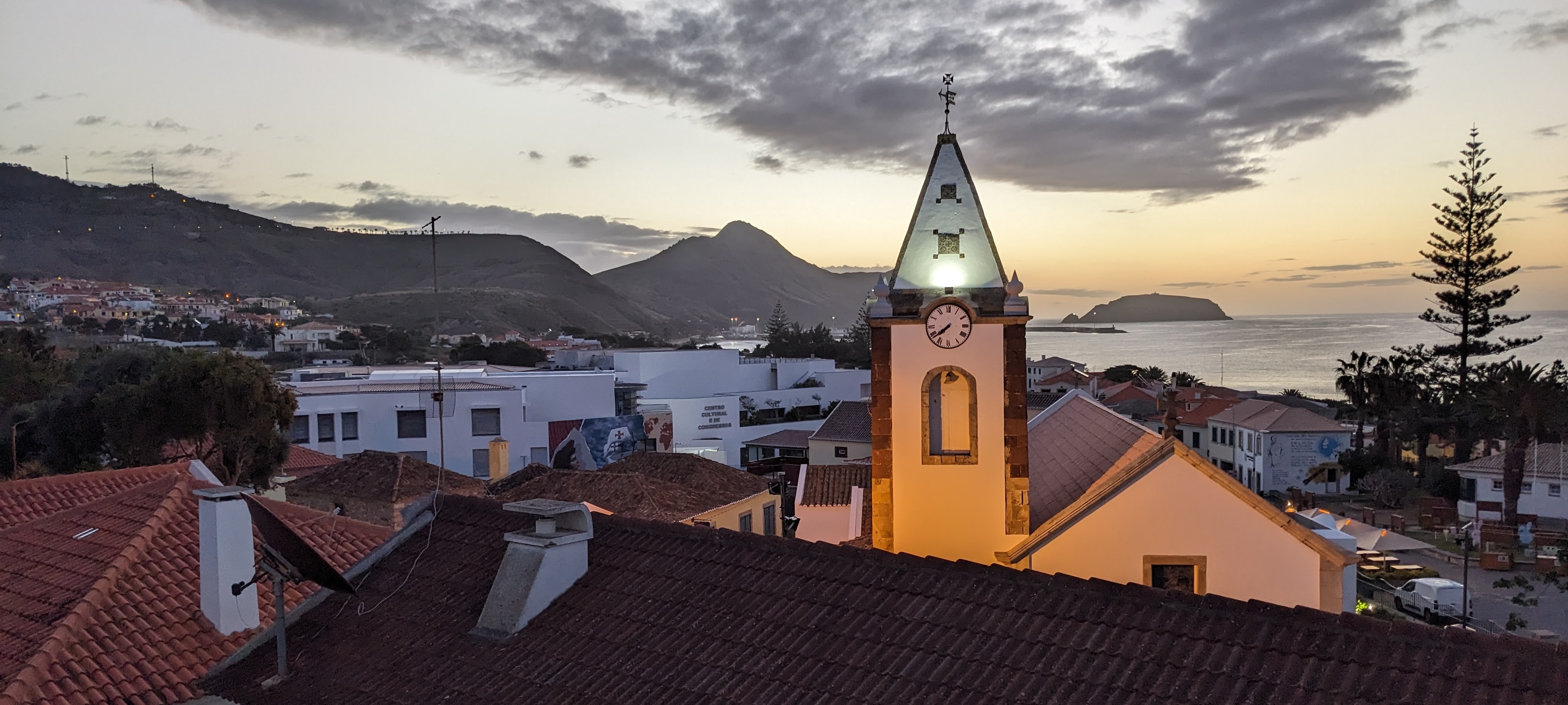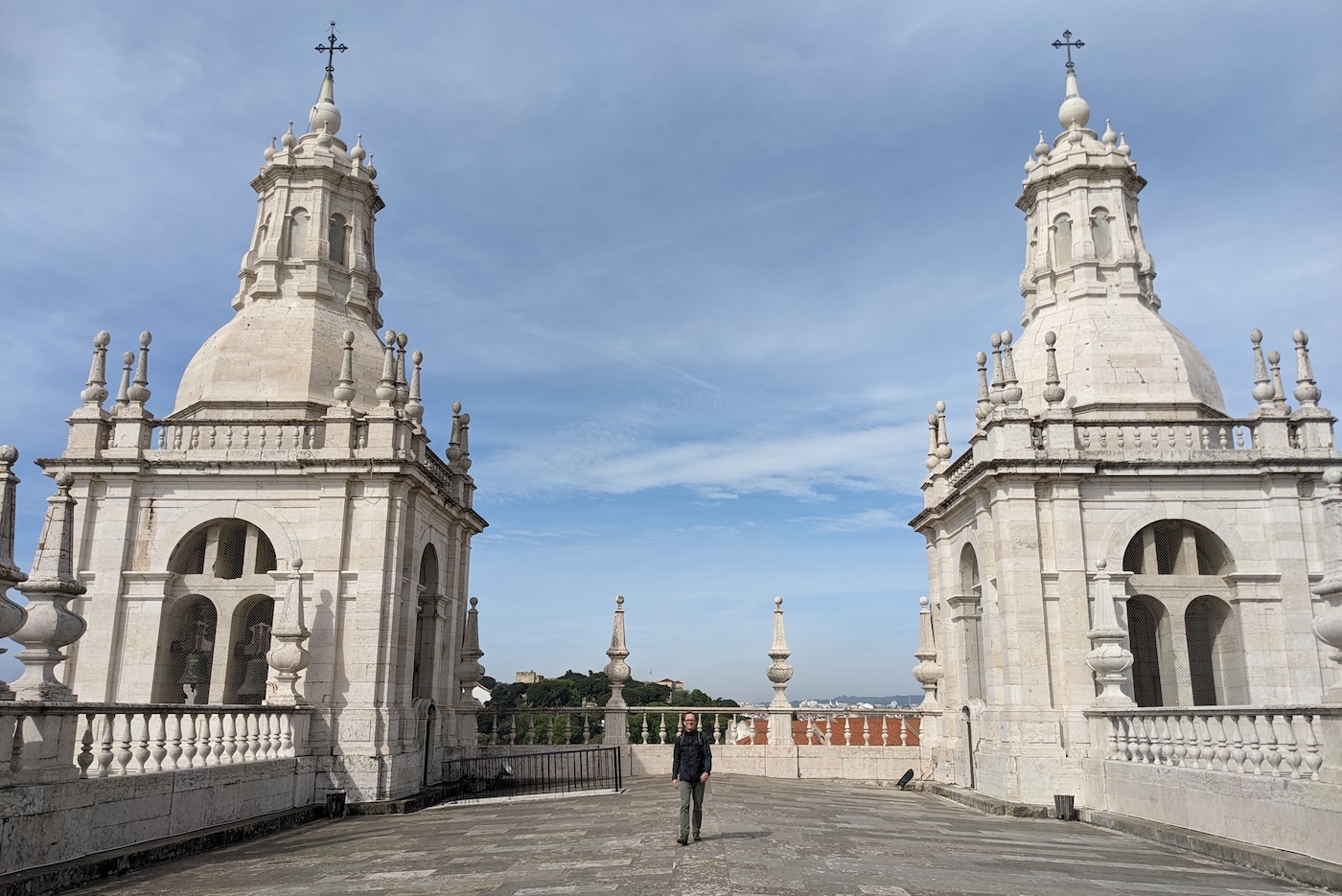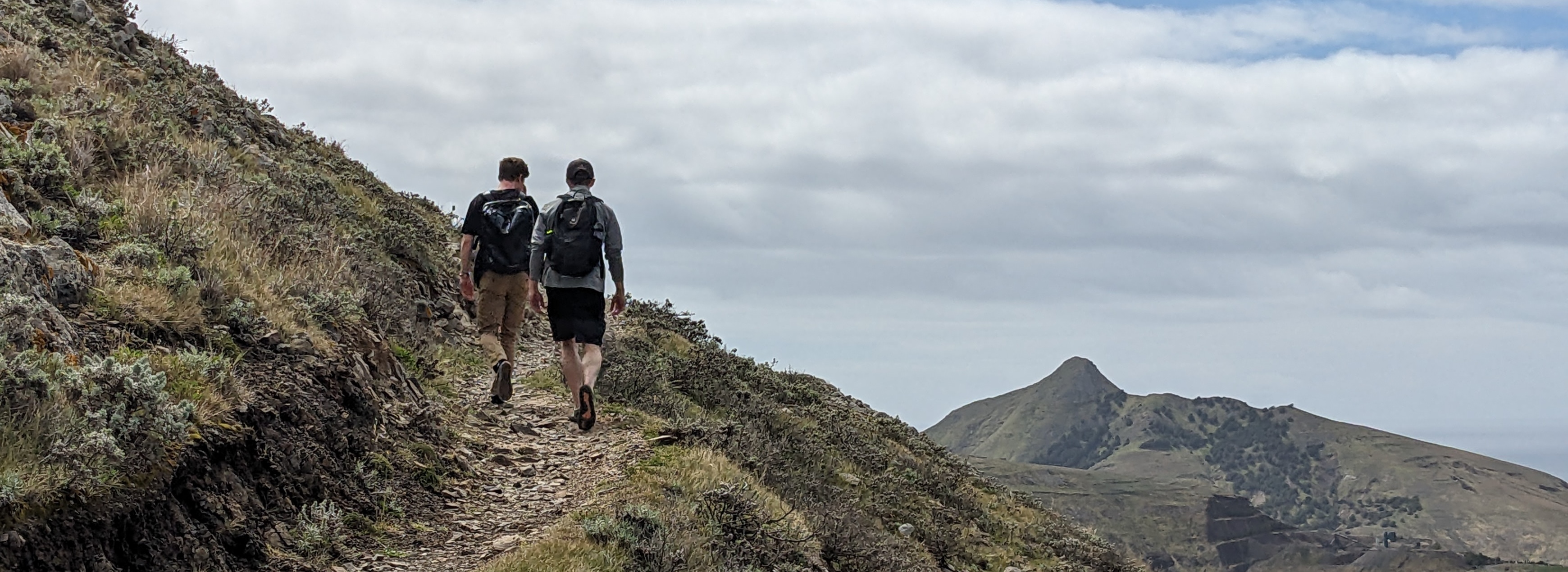5 Tips for an active vacation on Porto Santo, Portgual
Porto Santo is a small, sleepy island lying 50km (30mi) northeast of Madeira and nearly 1000km (600mi) southwest of mainland Portugal. It is best known for Christopher Columbus’ visits between 1478 and 1484, when observations of debris washed in by the ocean inspired him to think about what might lie beyond the western horizon.
Just 11km long and 6km wide (7x4mi), Porto Santo is a perfect place to slow down and explore a beautiful corner of the earth on foot and by bike. We loved the hikes, bike rides, and water activites we enjoyed during our five-day stay and departed wishing we’d had more time on this delightful island.
This post lists suggested activities day-by-day, with time left over for lazy mornings and contemplative afternoons/evenings. It closes with notes on traveling to Porto Santo, getting around, where to stay, and where to eat. Happy travels!
Day 1 - arrival & beach walk
We flew in from Lisbon at midday, dropped our luggage at our AirBnB, and set off to walk the beautilful, 9km (5.5mi) long sandy beach that makes up the south coast of the island. We walked an hour out and another hour back, but we could have gone double that to reach the very western end of the island. The only area of development is a cluster of hotels at Cabeço da Ponta. This beach walk left us plenty of time to settle into our apartment and reconnoiter restaurants in the small town of Vila Baleira.
If you’re interested in renting a windsurfer, SUP, or kayak, inquire at the small beach shack near the hotels in Cabeço de Ponta (no online listing available). It’s also possible to rent SUPs from Porto Santo Sub near the ferry harbor, but Cabeço da Ponta is a nicer location that lets you paddle/sail along the open beach rather than in the rocky bay at the east end of the island where Porto Santo Sub is located.
Day 2 - bike/hike to Terra Chã and Pico Branco
The Terra Chã/Pico Branco hike on the northeast corner of the island brings you to a peak and lookout point high on the cliffs overlooking spectcular scenery. It’s an easy out-and-back hike of 4km (2.5mi) in total, with the trail to Pico Branco (peak) branching off the main trail along the way. Views from Pico Branco cover almost the full length of Porto Santo, while amazing ocean views await at Terra Chã. While picnicking at Terra Chã, we were charmed, then slightly alarmed at the number of lizards our food attracted. I suppose they’re Porto Santo’s equivalent of piegeons!
The Terra Chã/Pico Branco trailhead and parking area are clearly marked off the main road. We rented mountain bikes to get there under our own power, but you can also hire a taxi or rent a compact car in town. However, Porto Santo is so quiet and unrushed that biking was a pleasure.
On the way back, we detoured down a dirt road to see the rugged, windswept beach at Calhau da Serra de Dentro (at the midpoint of the east side of the island). Then we sweated up a very long hill and eventually came to Miradouro da Portela (viewpoint) above Vila Baleira, a nice place for a quick breather and photo opp before the last cruise down into town.
All in all, this hike/bike makes for a lovely and active day out and about on Porto Santo. The distance from Vila Baleira to the trailhead is only 7km (via Farrobo and Camacha), with another 8km to return to town by continuing the clockwise loop around the eastern end of the island (via Serra de Dentro and Serra de Fora). It is quite hilly, so if you’re not in cycling shape, an ebike might be a good option. We didn’t mind the effort and LOVED coasting down the curving downhill stretches.
Day 3 - stand up paddleboard, windsurf, or scuba dive
We’d originally planned to do more water activities on Porto Santo, but ended up so charmed by the cycling that we devoted more of that. However, we did fit in a morning stand up paddle boarding session. The folks at Porto Santo Sub were absolutely lovely, but seas were quite rough on the day we took out SUPs. That made it more adventurous than the lazy paddle along the beach I’d imagined. I advise watching the wearther report carefully for wind direction and sea height before choosing your SUP rental day!
Porto Santo Sub also offers SCUBA diving on two nearby shipwrecks in 30m of water, another enticing option. The only other water sport rentals on Porto Santo were at shack by the hotels in Cabeço da Ponta. They seemed to offer a mixed collection of SUPs, windsurfers, and kayaks. All in all, it was very difficult to find up-to-date information about these options online, so asking in person will be your best course. Don’t worry, nothing seems to sell out, at least during the busy Easter week when we visited. (That’s “busy” by local standards; still sleepy by ours!) Porto Santo Sub is the exception with an excellent website and very quick response time to email inquiries.
It seems that surf lessons were once offered on Porto Santo, but we could not track down any active surf schools at the time of our visit. The waves were fairly small and better suited to body boarding, but this will vary with different wind and sea conditions.
Day 4 - biking to highlights of Porto Santo’s west end
This half-day trip takes in the sights of the west end of the island. After biking 2.5km along the main coastal road west out of Vila Baleira, turn inland (right) to follow signs for the golf course at Campo de Baixo, and eventually left on a dirt road to see the island’s basalt “organ pipes” formation. You’ll see similar rock formations all over the island, but the most impressive single “gallery” is found here.
A short uphill hike leads to a cave farther up the mountain, and you can continue hiking all the way up Pico de Ana Ferreira, the highest point of the island (see resources below).
Next, circle Pico de Ana Ferreira by biking north, then west on a quiet road lined with fragrant pine trees. Eventually, you’ll see signs to Miradouro das Flores. The first, paved section of road is a long, slow uphill slog (at least, it was for me) but the views make up for the effort. The actual lookout point is at the top of yet another hill up a rough dirt track. There, you can look over all of Porto Santo, marvel at the turquoise waters around the small neighboring island, and gaze out over open ocean to Madeira in the distance. A true postcard vista!
From Miradouro das Flores, it’s all downhill back to Vila Baleira. However, I recommend two short detours first. One visits another viewpoint slightly farther north, on the dirt road to Ponta da Canaveira. We were happy with the view from the highest point of this road and did not continue when the road dropped steeply downhill toward the coast, thus avoiding a steep uphill on the way back.
The second scenic detour is to the rocky beach at Ponta da Calheta, Porto Santo’s westernmost point, at the base of Miradouro das Flores. To get there, backtrack to the paved road, zoom down to the coast, and continue to the end of the oceanside road.
This entire bike ride is only about 18km and can easily be completed in half a day. We wrapped up this wonderful excursion by jumping off the jetty in Vila Baleira (see below).
In Vila Baleira
Vila Baleira is a tiny town with a lovely plaza and a church that chimes every quarter hour. Day trippers from Madeira fill the plaza at midday, but otherwise, we found it very quiet. One must-see here is the Casa Colombo (Columbus museum) and a must-do is jumping off the jetty.
The Casa Colombo museum celebrates Porto Santo’s most famous visitor, Christopher Columbus. He first sailed into port in 1478 and went on to marry the daughter of the island’s governor. For a time, he lived in a stone house that is now part of the museum and last visited in 1498, during his third voyage to America.
The section of the museum that covers Columbus is interesting but surprisingly brief. Most of the exhibits detail Portugal’s role in exploring the west coast of Africa, rounding the Cape of Good Hope to eventually reach India, and later, “discovering” Brazil. Other exhibits cover the Treaty of Tordesillas, in which Spain and Portugal divided the new world between themselves.
A final section of the museum covers later voyages and empires, including of Dutch merchant voyages. Keep an eye out for the display on merchant ship Slot ter Hooge, which wrecked on the north coast of Porto Santo in 1794. Further research on the topic brought me to the August 1975 issue of National Geographic Magazine for the fascinating story of the salvage of the Slot ter Hooge’s treasures, including John Lethbridge’s successful eighteenth century effort using an innovative “diving barrel”!
Getting there & getting around
Porto Santo can be reached by once-daily ferry from neighboring Madeira (2.5 hours) or by irregular flights. TAP flights connect Porto Santo to Lisbon a few times a week, and there are also a few once-weekly charter arrivals from other destinations.
There’s only a small fleet of taxis on the island, so rather than waiting in a long line for one upon arrival, we set off for Vila Baleira on foot — and arrived at our AirBnB only 20 minutes later. That really got us calibrated to the size of the island! When the time came to depart, we walked back to the airport, again in just 20 minutes. If only the connections at our home airport were that easy!
Porto Santo is so compact that getting around entirely by bike is fun and easy. It is hilly, though, with lots of long, relatively steep climbs. Ebikes and mopeds are also available, as are car rentals, but the latter seem like overkill on an island of this size. All rentals can be arranged on the spot; no need to book ahead. The going rate for mountain bikes is €10-15 per day, making this a very affordable and environmentally-friendly option.
Where to stay & what to eat
There are a handful of hotels west of the main town, but none particularly appealed to us. We booked this lovely AirBnB appartment in Vila Baleira instead and LOVED everything about it, from the spacious apartment itself to the location right in the middle of the tiny, historic main town with easy access to the beach, the big Pingo Doce supermarket, and a selection of bike/scooter/car rental places.
We ate out at one of Vila Baleira’s handful of restaurants on our first night, but once we discovered the fresh fish section of the supermarket, we ate in for the rest of our stay. We couldn’t resist with fresh tuna prices one-tenth of what we’d pay at home, and we feasted on tuna steak or poisson cru tahitiene (see recipe below!).
Resources for a stay on Porto Santo
- Online guide to the fauna of Porto Santo.
- More hikes at this Journey Era blog.
-
Poisson cru tahitiene recipe.
Combination trips: Porto Santo/Lisbon or Porto Santo/Madeira
Since our flight connected through Lisbon, it was easy to combine our trip to Porto Santo with a two-night stay in Portugal’s capital city. Lisbon’s metro will whisk you from the airport to the city center in 30 minutes, and two nights is about perfect for the main sights in the compact city (see “three quick tips” below). Much as we enjoyed that combination, I would have rather spent the entire trip on Porto Santo. It was just that nice and peaceful! But I had already seen most of Lisbon on a previous trip, and I’m a person who enjoys small, sleepy, outdoorsy places.
Another option is to combine a visit to Porto Santo with a trip to Madeira (separate post on the amazing hiking there coming soon!). Just mind the ferry times when organizing your trip, since the ferry departs Funchal (Madeira’s main town) quite early. The vast majority of the Porto Santo’s visitors are day-trippers from Madeira, but the island definitely deserves more than a day trip!
Three quick tips for Lisbon
For those planning to combine a Porto Santo trip with time in Lisbon, I’ll throw in three quick tips for visiting Portugal’s capital city. You can find information on Lisbon’s sights in any guide book or website, so I’ll just mention three lesser-known things here.
- I highly recommend a trip to the Monastery of Sao Vicente near the Pantheon. The monastery and exhibits are interesting, but the true highlight is the rooftop with its 360° views of Lisbon. You literally stand on the slightly curved roof of the cathedral, and the views are incredible. We visited early in the morning and had the entire rooftop to ourselves.
- Food: the well-known Mercado da Ribeira (former market hall turned food court) is one good option, but we stumbled across Mirari and loved it. This is an outdoor food court with upscale food trucks and seating set crumbling factory buildings. I know this doesn’t sound appealing, but somehow, the effect is wonderful, and it definitely takes “shabby chic” to a new level!
- The Alfama is Lisbon’s oldest, most atmospheric quarter, but local, long-term residents are being pushed out by AirBnB rentals. Therefore, we avoid AirBnBs in Lisbon and booked a city-approved hotel instead. One such option is the Hotel Convento do Salvador, which is quite nice though pricy.
I hope this has been helpful and interesting, either as a planning tool or armchair adventure. For other exciting trips and ideas, click on “HOME” at the top of the page. Thank you for visiting TheTravelBug.blog and happy travels!


